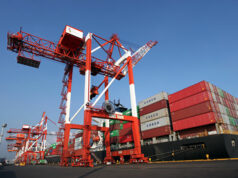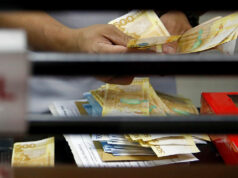BSP eyes at least 50 bps policy rate cuts this year
THE CENTRAL BANK is still looking to cut rates by at least 50 basis points (bps) this year, its chief said on Thursday.
Bangko Sentral ng Pilipinas (BSP) Governor Benjamin E. Diokno said while the central bank will remain “data dependent,” it still has “a long way to unwind” the policy tightening it did in 2018 to quell inflation.
Asked whether the central bank will still cut rates at least by 50 bps as he said in December, Mr. Diokno told reporters at a briefing held at BSP on Thursday: “50 basis points this year? Yes. Still.”
Mr. Diokno has also said a 25-bp cut is possible as early as this quarter.
The BSP Monetary Board will hold its first policy meeting for the year on Feb. 6. Its other review for the quarter is on March 19.
Benchmark rates currently stand at 3.5% for the overnight deposit facility, four percent for overnight reverse repurchase and 4.5% for overnight lending following 75 bps worth of reductions implemented last year.
These cuts partially reversed the 175 bps worth of rate hikes in 2018.
The economy expanded by an eight-year low of 5.9% last year, missing the low end of the government’s 6-6.5% gross domestic product (GDP) growth target for 2019.
Mr. Diokno said the BSP’s policy decision next week will mainly depend on inflation and other data and need not follow the US Federal Reserve’s move to keep rates steady at their first review on Jan. 28-29.
“The reading right now is that maybe the Fed might cut another 50 basis points. Maybe one cut in the middle of the year and another one at the end of the year. That’s the new reading… Maybe we will do our own analysis on inflation,” he said.
He added that being data dependent means not only assessing previous data but also projections.
“[It] looks like petrol prices will continue to go down. [It] looks like food inflation will continue to go down. So let’s see,” he said.
IMPACT FROM TAAL, VIRUS
Meanwhile, the central bank said its initial assessment showed Taal Volcano’s eruption could have a minimal impact on gross domestic product growth in the first quarter.
“So our estimate is it’s between P4.3 billion to P6.7 billion. The total economic GDP is around P20 trillion,” Mr. Diokno said. “The impact of the eruption could result in the slightly lower growth of output in the [Calabarzon] Region for the first quarter of 2020.”
“While we do not expect this to substantially dampen the country’s growth prospects for 2020, we are mindful that the threat of the more dangerous eruption has not fully dissipated,” he added.
The Philippine Institute of Volcanology and Seismology lowered Taal Volcano’s alert status to level three from four on Jan. 26. This has allowed some of about a million people displaced to go back to their hometowns.
On the other hand, the central bank said they are still looking into the impact of the spread of the novel coronavirus from China to the country as they have mostly seen its effect on the Chinese economy, BSP Monetary Policy Sub-Sector Officer-In-Charge Dennis D. Lapid said.
“But an emerging assessment is that it could be short-lived compared to previous similar disease outbreaks. This time around many of the governments have already learned… Authorities in the region are much better placed…,” Mr. Lapid said.
He added that what complicated the situation is that the spread of the virus coincided with the Lunar New Year, when a lot of people in China travel.
Mr. Diokno said a part of the response of the Chinese government to the outbreak is to extend the holiday.
“I think unlike the previous incidents, the Chinese government is in a better position to contain it and I think it’s less fatal,” Mr. Diokno said.
The Health department on Thursday confirmed the first case of the novel coronavirus in the Philippines. — L.W.T. Noble



